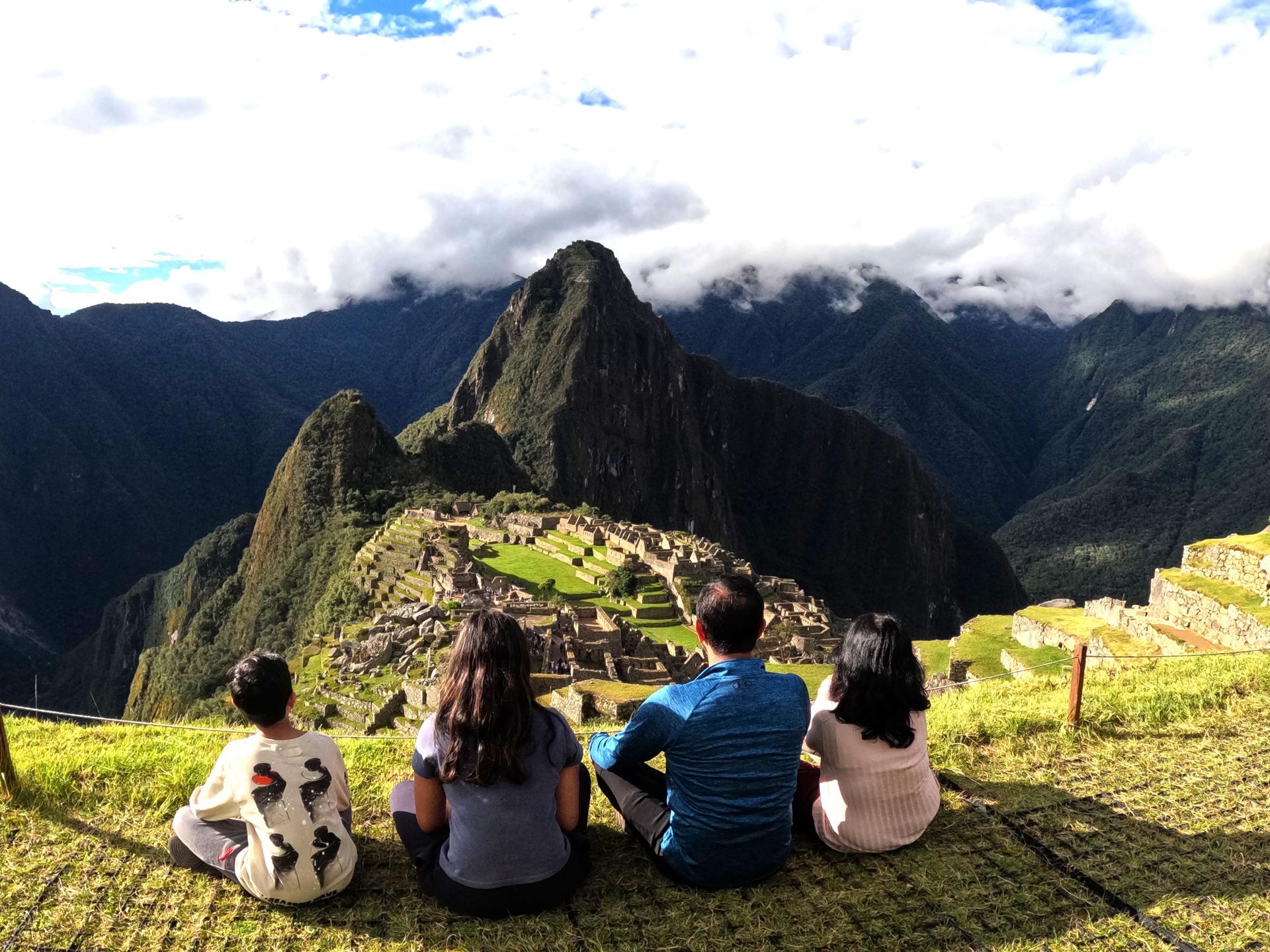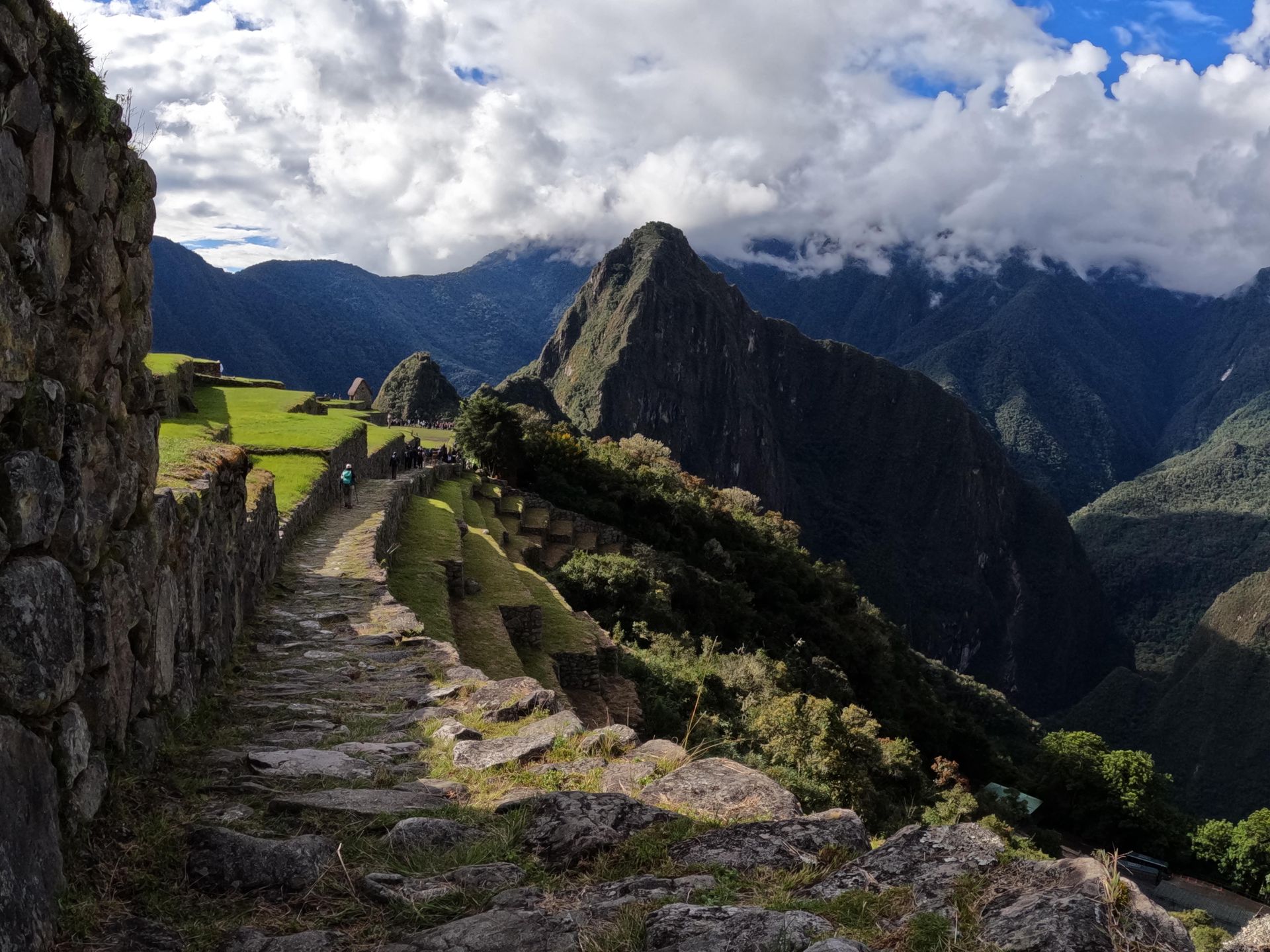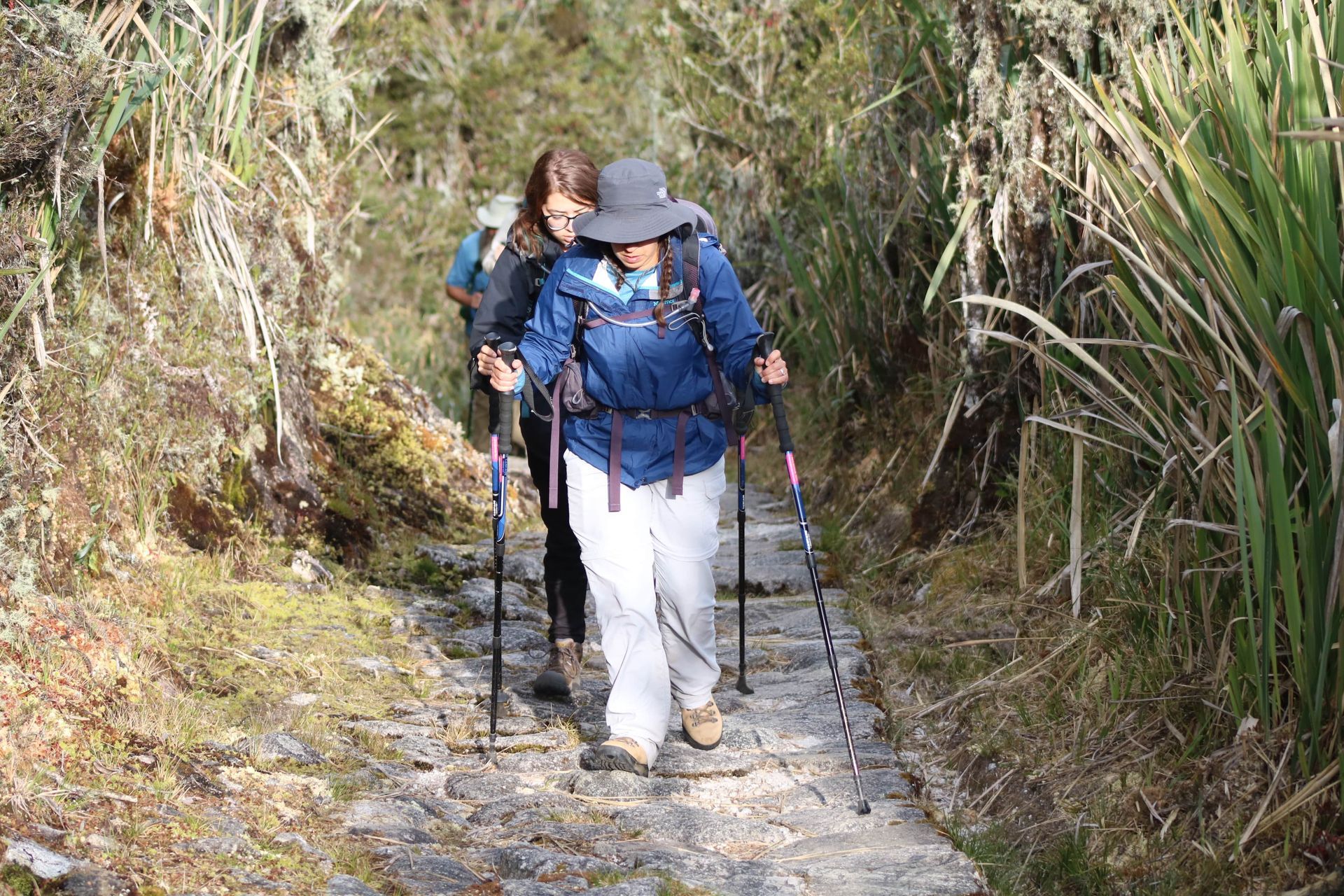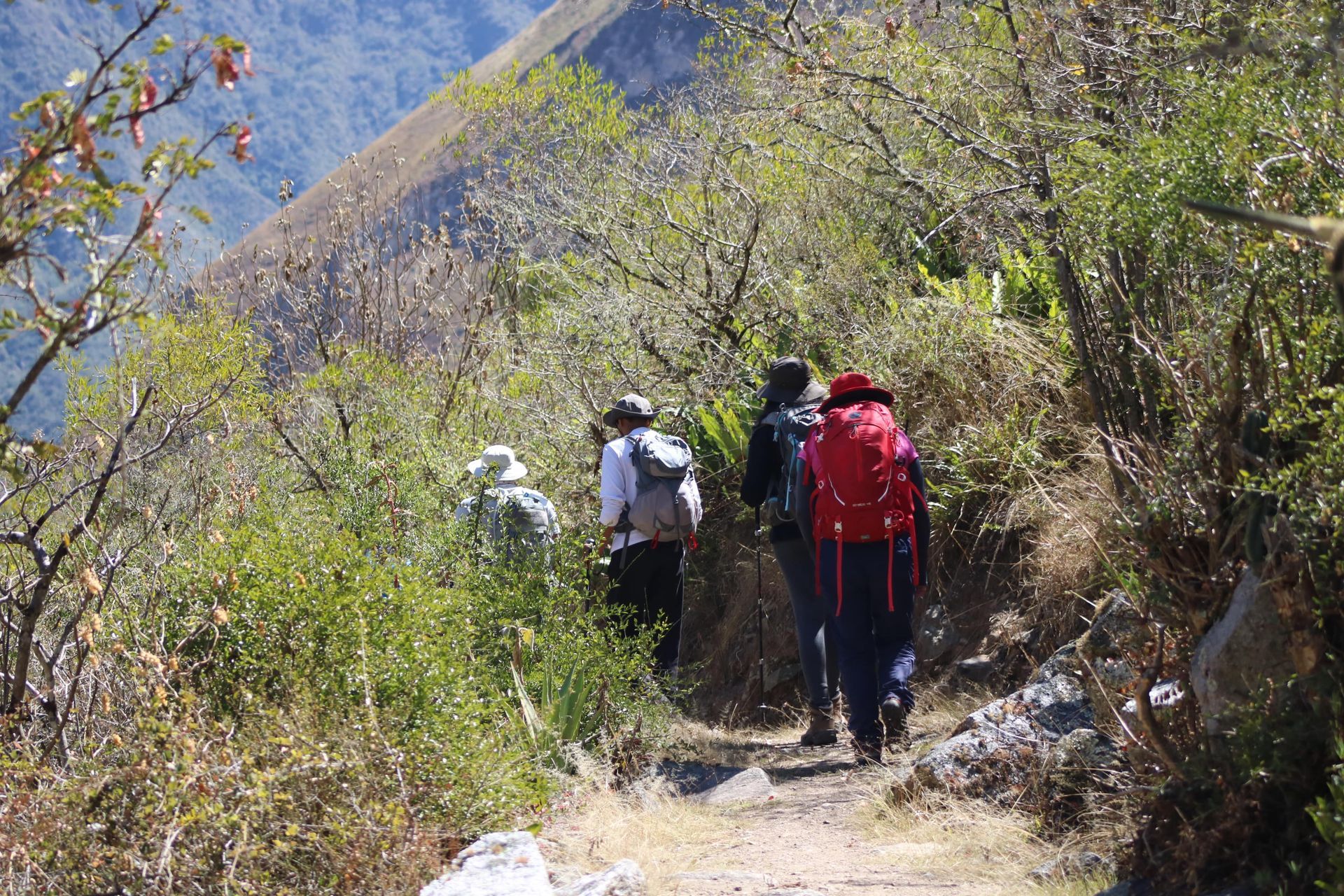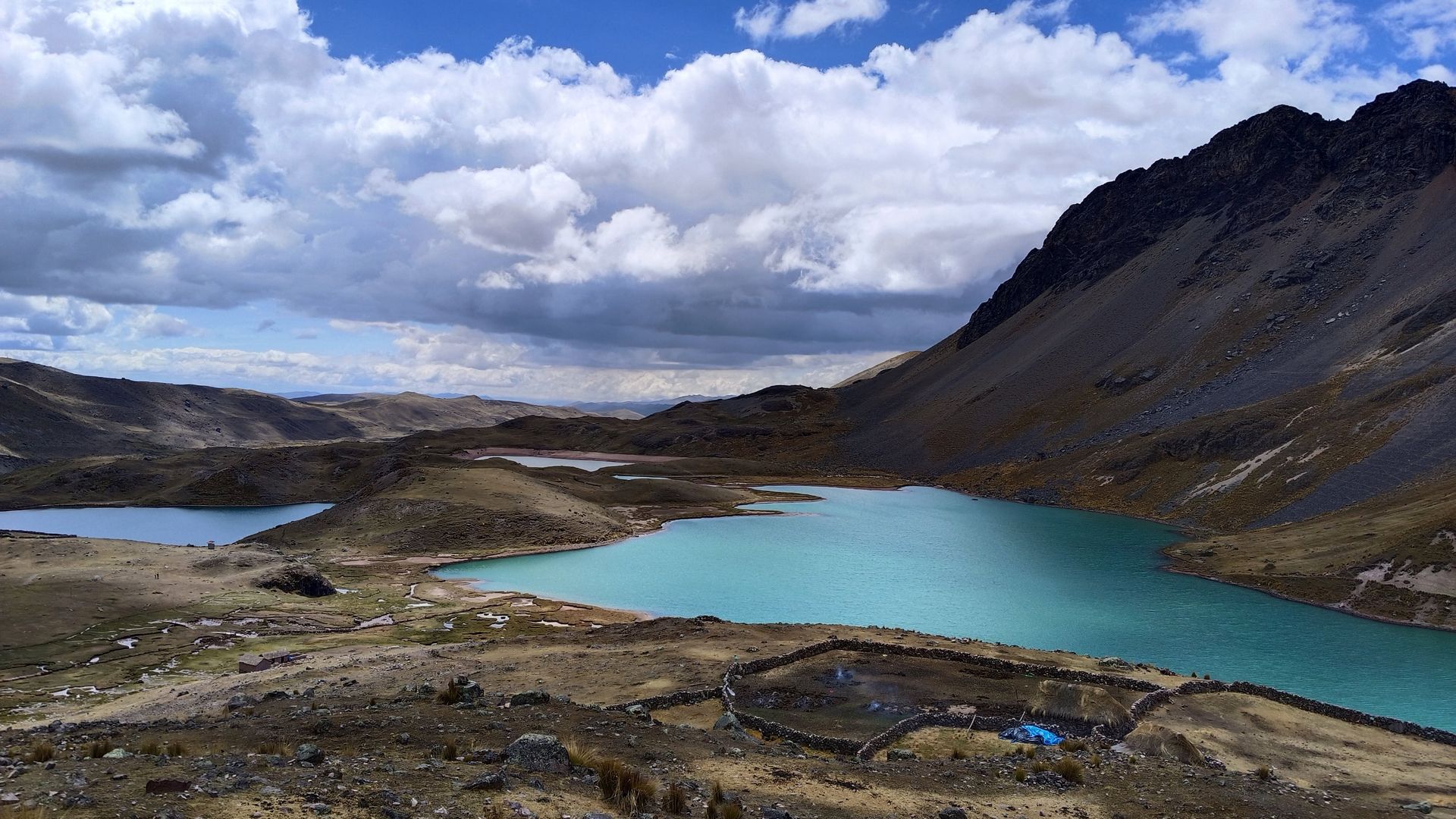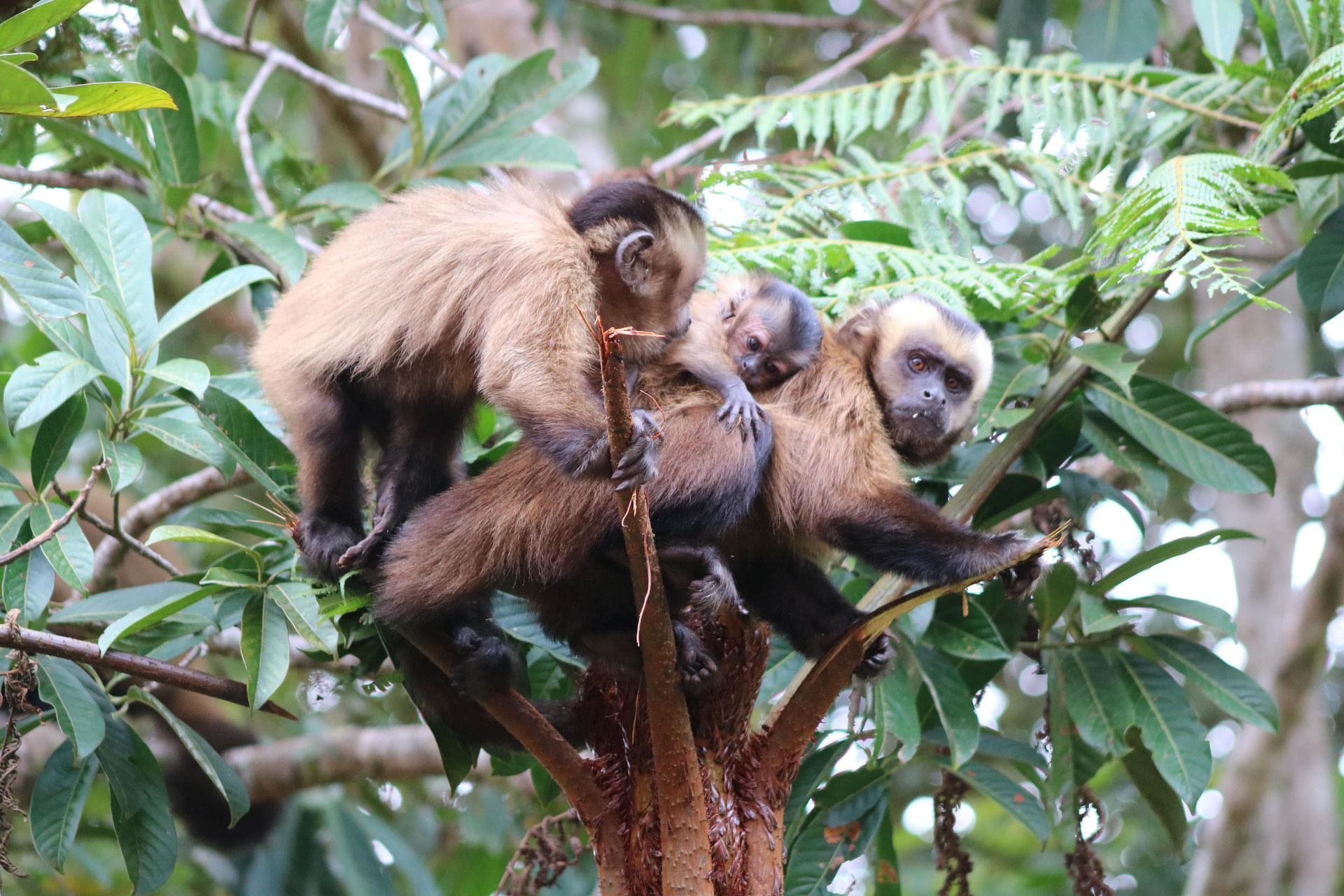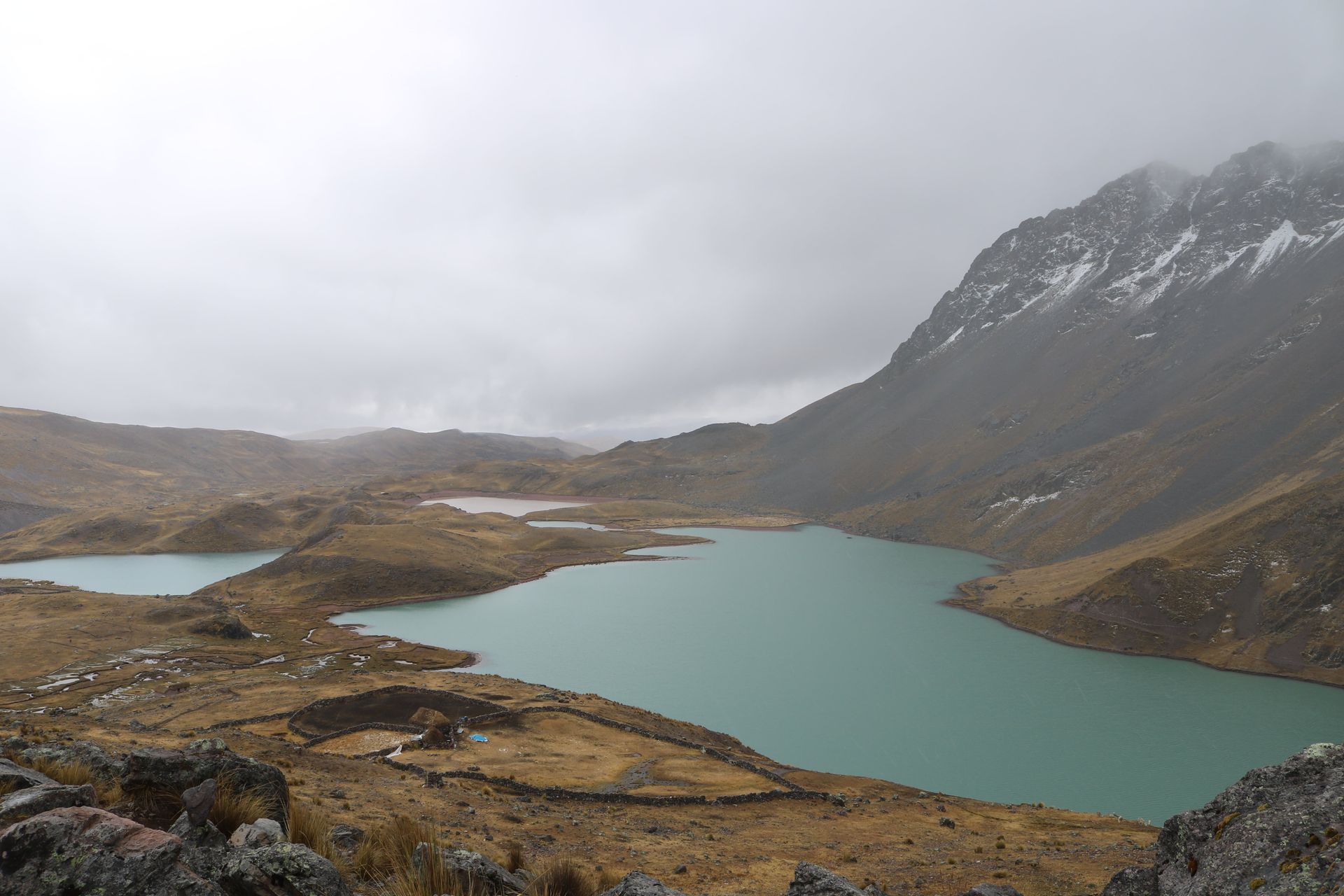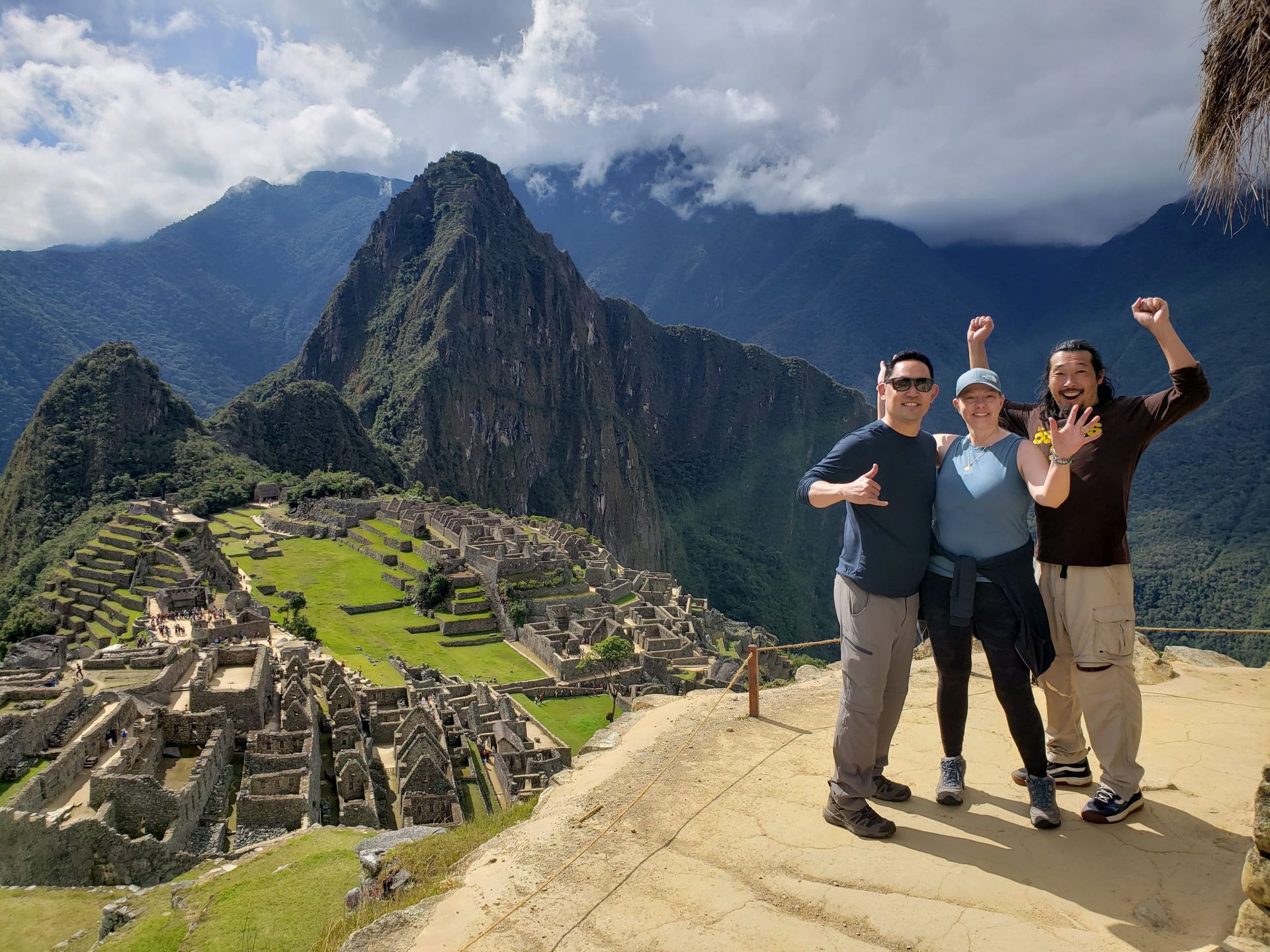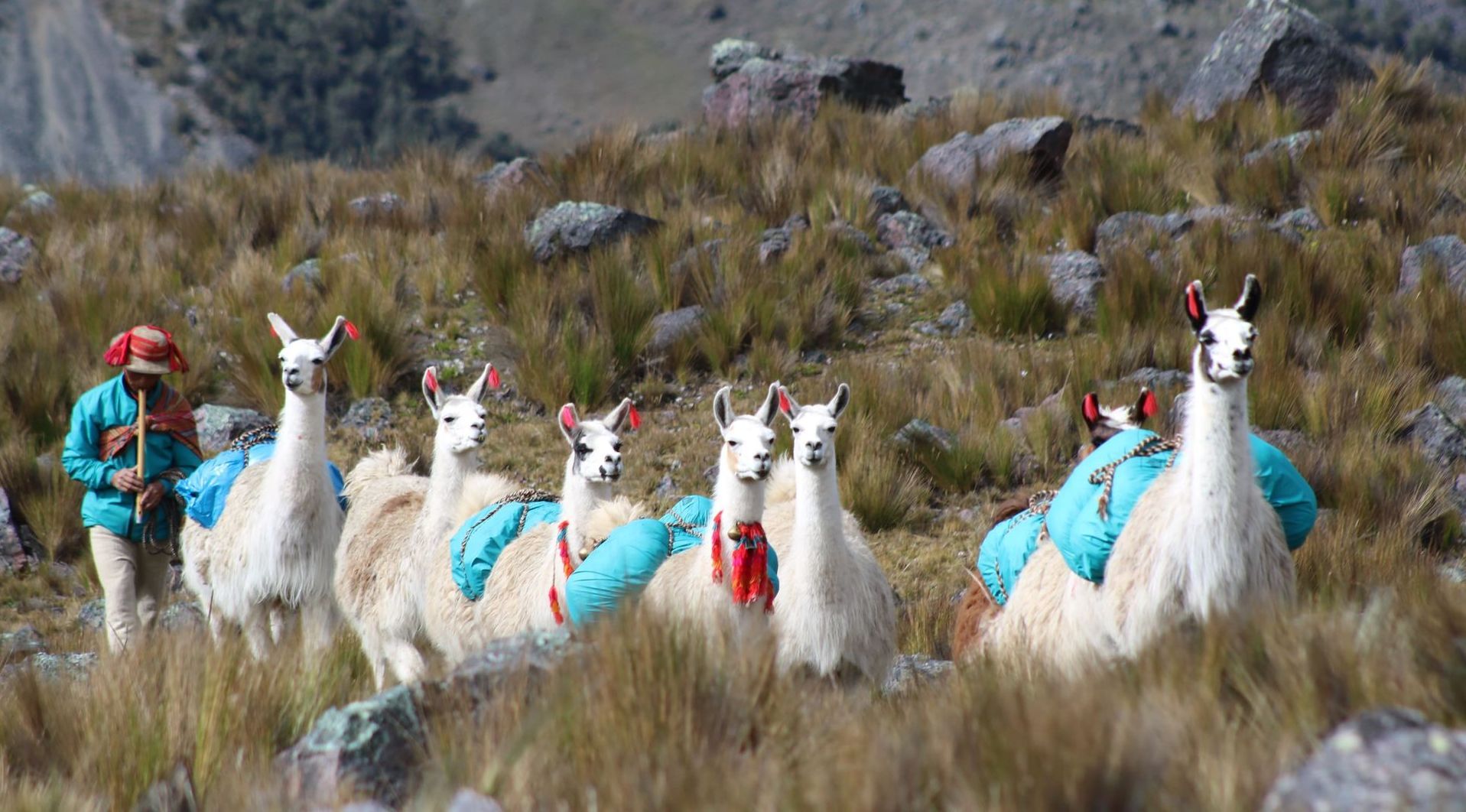How Far is the Inca Trail to Machu Picchu?
Your Ultimate Guide
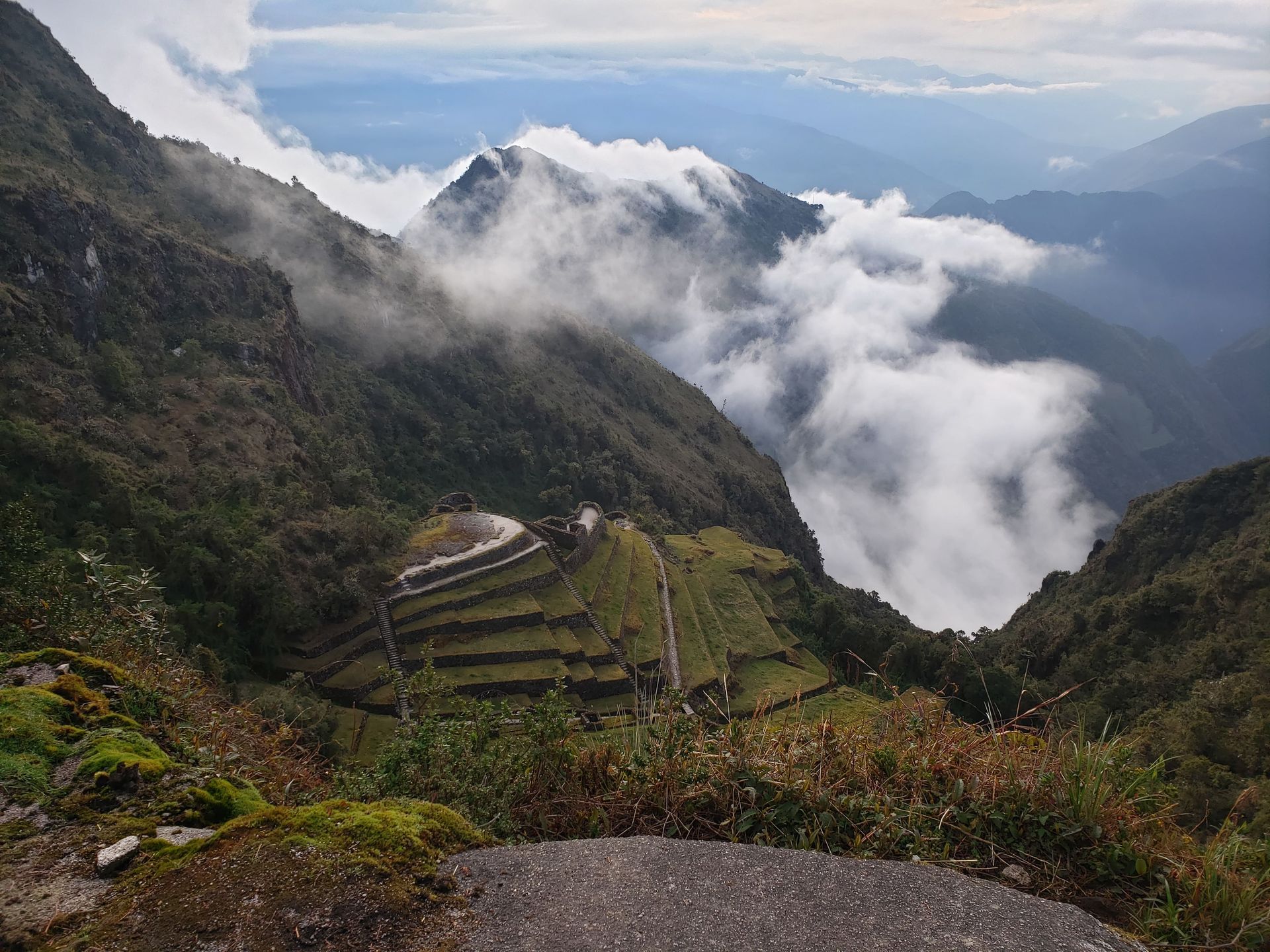
Machu Picchu is an ancient wonder that is still captivating the hearts of adventurers and history buffs alike. It is located high in the Andes Mountains of Peru. Travelers from all over the world are drawn to this breathtaking archaeological site because it provides a window into the impressive accomplishments of the Inca civilization. However, getting to this famous location entails navigating the legendary Inca Trail, a trip wrapped in mystery and majesty.
One of the most pressing inquiries you could have when you start to organize your journey to Machu Picchu is "How far is the Inca Trail to Machu Picchu?" The answer to this seemingly simple question will help you to better comprehend the difficulties and rewards you will face during this wonderful journey. We'll examine the length, geography, and experiences you may anticipate along this renowned trail in this thorough guide. So let's go off on a virtual excursion to discover the mysteries of the Inca Trail. Lace up your hiking boots, get your soul ready for adventure, and begin.
Set the Scene for the Machu Picchu Adventure
An archaeological marvel that has captivated explorers, historians, and thrill-seekers for years is Machu Picchu, which is hidden away in Peru's Andes Mountains. This historic Inca fortress, positioned on a stunning ridge overlooking the Urubamba River Valley, is more than simply a tourist attraction; it's an enigma and a reminder of the amazing accomplishments of a long-gone human civilization. As soon as its name is mentioned, visions of mist-shrouded ruins, stone terraces tumbling down cliffs, and the sensation of awe that comes with discovering an old world come to mind.
One concern is undoubtedly on your mind as you set out to explore Machu Picchu's mysteries: "How far is the Inca Trail from Machu Picchu?" It's a seemingly straightforward question, but it holds the key to understanding this adventure's core. Knowing how far a route is doesn't just mean knowing how many steps you'll take or how many kilometers you'll travel. It's about realizing the scope of the experience that lies ahead, psyching yourself up for it, and planning a safe and joyful trip to this legendary location.
Why Knowing the Length of the Trail Is Important
One cannot overestimate the significance of knowing the length of the Inca Trail to Machu Picchu. This crucial element of trip preparation is important for the following reasons:
1. Physical Preparation: Depending on how far the trail is, you may estimate how physically taxing the hike will be. Whether you're an experienced hiker or a first-time traveler, getting your body ready for the trip is crucial. Knowing the distance can help you customize your exercise routine and develop the endurance needed to overcome the trail's obstacles.
2. Making an itinerary: Your journey to Machu Picchu will take several days. You may better arrange your daily schedules and ensure that you arrive at specified campsites or lodgings in a timely and comfortable manner by being aware of the length of the trail. This has an impact on the pace of your travel as a whole.
3. Mental Preparedness: Trekking the Inca Trail requires both physical and mental preparation. The ability to psychologically prepare for the ups and downs, both literally and figuratively, depends on knowing how far you'll travel each day. You can maintain your motivation and create reasonable expectations thanks to it.
4. Safety: Planning for safety is made easier by knowing the distance. It enables you to bring the appropriate quantity of gear, such as water and snacks, and makes sure you're appropriately equipped to handle the obstacles associated with altitude.
We'll go into more detail about the length of the Inca Trail in the pages that follow, giving you information about the many routes, daily hiking lengths, and what to expect as you go. Join us on this virtual adventure of discovery if you've ever wondered how far it is from the trailhead to the breathtaking Machu Picchu. Put your hiking boots on and join me as we explore one of the most famous trekking paths in the world.
A Review of the Inca Trail's History
It's important to travel back in time and understand the historical and cultural background of this amazing way before delving into the details of the Inca Trail's length.
Origins of the Inca Trail:
The Inca Trail is a network of historic routes that crisscrossed the Andes, linking huge areas of the Inca kingdom. It is known as "Qhapaq an" in Quechua, the language of the Inca Empire. There are a number of ways to get there, but the trail that goes to Machu Picchu is the most well-known. The 43-kilometer (26-mile) trail that connected Cusco, the capital of the empire, to the magnificent citadel of Machu Picchu served as a lifeline as well as a method of transportation.
Status as a UNESCO World Heritage Site and significance:
The Inca Trail is much more than just a path made of rocks and mud; it is a monument to the brilliance and skill of the Inca civilization's engineers. This complex system of roads served a variety of functions, from promoting trade and communication to enabling swift movement of armies.
The Inca Trail, together with Machu Picchu and the city of Cusco, was named a UNESCO World Heritage Site in 1983 in honor of its historical importance and cultural value. This honorable distinction underlines its significance for all of humanity as well as for Peru. It emphasizes the importance of preserving and safeguarding this antiquated marvel so that present and future generations might enjoy it.
Popularity of Machu Picchu as a Travel Destination:
Machu Picchu's attraction transcends space and time. The "Lost City of the Incas" was constructed in the 15th century but was not rediscovered until 1911 by American explorer and historian Hiram Bingham. Since then, it has caught the interest of tourists all around the world.
Today, Machu Picchu is one of the world's most visited tourist sites, welcoming hundreds of thousands of travelers each year. Anyone with an adventurous spirit and a passion for history should visit because of its magnificent architecture, intricate stone masonry, and the sheer mysticism of its mountainside location.
The Value of Advanced Planning
It's an adventure unlike any other to set off on a journey along the Inca Trail to Machu Picchu. It's important to understand that this walk is not a last-minute hiking adventure, though. Planning meticulously is essential to guaranteeing a safe, fun, and culturally sensitive event.
Obtaining Permits for the Inca Trail
Getting the required permits is one of the first stages in organizing your Inca Trail journey. To conserve the delicate ecosystem and maintain the integrity of the trail, the Peruvian government strictly controls access to the Inca Trail and places a cap on the number of hikers. Particularly during the busiest trekking season, which runs from April to October, these permits are highly sought after and frequently sell out months in advance.
The "Inca Trail Permit," which gives you entry to the trek and Machu Picchu, is the main permit you'll require. Since only a certain number of licenses are granted each day, it is imperative to apply for this permit well in advance. When applying for the permit, you'll also need to supply specific information, like the names of every trekker in your group and your preferred tour operator. The Need for a Licensed Tour Operator.
This is where using a certified tour operator is essential. It is in your best interest to reserve your Inca Trail walk with a reputable and licensed tour operator because the Peruvian government requires that all trekkers be accompanied by a professional tour guide. This is why:
1. Permit acquisition: Licensed tour operators are better able to acquire the necessary permissions for the excursion because they have experience and established connections with government officials. They can make sure that your group has a position on the path on the days that work best for you.
2. Safety and Expertise: Qualified tour guides have received extensive training in emergency procedures, first aid, and treating altitude sickness. They'll protect you, but they'll also teach you a lot about the trail's natural beauty, history, and culture.
3. Logistics: Tour companies handle the logistics of travel, lodging, food, and equipment, freeing you to concentrate on the path and the breathtaking beauty all around you.
4. Cultural Respect: A licensed tour operator will emphasize responsible and sustainable trekking practices, ensuring that you leave minimal impact on the trail and respect the local communities you encounter.
5. Peace of Mind: Making a reservation with a licensed operator gives you the assurance that your trek is well-planned, legal, and compliant with all laws.
In summary, Planning ahead is essential for a successful, safe, and culturally enriching experience on the Inca Trail to Machu Picchu. Obtaining permits and choosing a licensed tour operator are key steps. The Inca Trail offers a profound cultural and historical experience, making it a pilgrimage for trekkers and history enthusiasts. Understanding the trail's distances and logistics is crucial for a successful adventure.
Investigating the Various Routes to Machu Picchu
There are many ways to trek to Machu Picchu, and each one offers a different combination of challenge, history, and scenic beauty. Let's examine some of the most popular routes, like as the Salkantay Trek and the Classic Inca Trail, to assist you in picking the best route for your trip.
1. The distance of the Classic Inca Trail is roughly 26 miles (43 kilometers) over the course of four days of hiking.
This journey is rated as moderate to difficult in terms of difficulty. The trail is not particularly long, but the steep ascents and descents, high altitude, and occasionally unpredictability of the weather can make it difficult on the body.
Views: The Classic Inca Trail is well-known for its stunning views. You'll go through a range of environments along the journey, from lush cloud forests to high alpine passes. Before reaching the magnificent Machu Picchu, you'll also have the chance to tour other ancient Inca sites, such as Wiñay Wayna and Phuyupatamarca.
2. Salkantay Trek Length: The Salkantay Trek can range in length, but it usually takes five days and covers about 37 miles (60 kilometers).
This trek is regarded as being moderately difficult. The trail offers various topography, including high mountain passes and subtropical forests, yet it is less busy than the Classic Inca Trail.
Scenery: The snow-capped Salkantay Mountain is a highlight of the Salkantay Trek. Before arriving at the famous Machu Picchu, hikers will also pass through isolated Andean settlements, verdant valleys, and crystal-clear lakes.
3. The Lares Trek covers about 21 miles (33 kilometers) over the course of three to four days.
This trek is typically regarded as being of a moderate difficulty. It provides opportunity to interact with nearby indigenous communities and is less popular than the Classic Inca Trail.
The Lares Trek offers possibilities to discover traditional Andean towns and relax in natural hot springs while passing through the gorgeous Sacred Valley. While it differs from the Classic Inca Trail in terms of experience, it nonetheless leads to a trip to Machu Picchu.
4. Inca Jungle Trek Distance: The Inca Jungle Trek can vary, but it generally takes three to four days and covers a distance of 28 to 36 miles (45 to 58 kilometers).
This trek is regarded as being moderately difficult. It mixes hiking, mountain biking, plus rafting and zip-lining as extras.
Scenery: The Inca Jungle Trek is an exhilarating tour through tropical landscapes, cloud forests, and isolated communities. You eventually arrive at Machu Picchu via this exciting and adrenaline-inducing journey.
You can customize your journey to your preferences and level of fitness by choosing from one of these routes, each of which offers a unique experience. Remember that no matter which route you take, the reward at the end is the same: the opportunity to be in awe of the mythical Machu Picchu, an ancient treasure that has mesmerized visitors for generations. As you weigh the distance, difficulty, and scenery of each option.
The Traditional Inca Trail: A Historical Tour
The Classic Inca Trail is the way for you if you're looking for the classic Inca Trail experience. Four days on this storied trail provide a profound immersion into the history, culture, and spectacular natural beauty of the area. Let's explore the Classic Inca Trail in further depth as we set out on this virtual adventure, highlighting its significant landmarks, historical places, daily hiking lengths, and campground locations.
Important Monuments and Archeological Locations
82 km (the starting point of the trek): At Kilometer 82, you'll go through a checkpoint and bridge the Urubamba River to start your journey. The Classic Inca Trail's official starting point is here.
Patallacta: A former Inca checkpoint, Patallacta is the first notable archaeological site you'll come upon. You may learn more about the trail's historical significance as a commerce route right here.
Runkurakay: It is thought that travelers halted here at this circular Inca ruin. Its construction displays the Incas' extraordinary stone-cutting prowess.
Sayacmarca: Perched on a ridge with breathtaking vistas of the neighboring mountains. It is an interesting place to explore due to its complex layout and advantageous position.
Phuyupatamarca: Also referred to as the "Town above the Clouds," this location truly lives up to its moniker with breathtaking views. Its terraces and fountains, which have been well-preserved, offer a glimpse into the Incas' expertise of agricultural and water management.
One of the trail's most impressive stops is Winay Wayna, which has multi-level terraces and beautiful brickwork. It is also renowned for its luxuriant orchid gardens, which will enhance the beauty of the landscape on your tour.
You get your first glimpse of Machu Picchu at Intipunku, also known as the Sun Gate. As you see the historic citadel for the first time in its entirety, you are filled with anticipation and amazement.
Locations of campgrounds and daily hiking distances
Day 1 (Kilometer 82 to Wayllabamba): The distance covered on the first day is roughly 7.5 miles (12 kilometers). Through subtropical terrain, you'll climb to Wayllabamba, where you'll place your tent.
Day 2 (Wayllabamba to Pacaymayo): The distance covered on this day, which is around 7.5 miles (12 kilometers), is the hardest. Before descending to the Pacaymayo campground, you will ascend to the trail's highest point, Dead Woman's Pass.
Day 3 (Pacaymayo to Wiñay Wayna): On the third day, there will be a 9 mile (15 km) hike. You'll stop at a number of historical locations along the journey, including Runkurakay, Sayacmarca, and Phuyupatamarca. At Wiñay Wayna, you'll set up camp.
Day 4 (Wiñay Wayna to Machu Picchu): The distance covered on the final day is about 3 miles (5 kilometers). You'll get up early to travel to Intipunku for an initial view of Machu Picchu, and then you'll descend completely to see the citadel.
The Classic Inca Trail offers a unique walk through history, following the footsteps of ancient Incas, showcasing archaeological wonders and breathtaking vistas in Peru's past.
Exploring Alternative Routes to Machu Picchu
Although the Classic Inca Trail is the most well-known route to Machu Picchu, there are other ways to reach this historic treasure. Alternative trekking routes are available in Peru, each with their own distinct beauty and difficulties. Let's explore a few of these alternative paths and contrast their lengths, landscapes, and experiences.
1. Salkantay Trek
The Salkantay Trek typically takes five days to complete and is around 37 miles (60 kilometers) long.
Terrain: This hike takes you through a variety of environments, from subtropical rainforest to high alpine passes. You'll experience rough terrain, incline and decline steeply, but you'll also take in the peacefulness of isolated Andean communities.
Experience: The Salkantay Trek offers spectacular views of the region's highest peak, the snow-capped Salkantay Mountain. It is a superior option for people looking for a more peaceful walk because it is less congested than the Classic Inca Trail.
2. Lares Trek
Distance: The Lares Trek normally lasts three to four days and travels around 21 miles (33 kilometers).
Terrain: The trail meanders through the gorgeous Sacred Valley, passing by serene lakes and breath-taking mountain views. It has less severe hills than some other hikes, making it a less demanding alternative.
Experience: Interacting with nearby indigenous people and learning about their traditional way of life is made possible by the Lares Trek. Along the journey, you'll have the chance to visit real Andean villages and relax in natural hot springs.
3. Inca Jungle Trek
Distance: The Inca Jungle Trek can vary but is roughly 28 to 36 miles (45 to 58 kilometers) long, usually completed over three to four days.
Terrain: This adventure-packed route combines trekking, mountain biking, optional zip-lining, and even rafting. You'll traverse a variety of terrains, from cloud forests to lush valleys, making it one of the most dynamic treks.
Experience: The Inca Jungle Trek offers an adrenaline-pumping journey for adventure enthusiasts. It's less crowded than the Classic Inca Trail and culminates with a visit to Machu Picchu, providing a well-rounded experience for thrill-seekers.
4. Huchuy Qosqo Trek
The Huchuy Qosqo Trek is just about 10 to 12 miles (16 to 20 kilometers) long and takes two days to complete.
Terrain: With its gradual ascents and descents, this walk is less demanding than some of the longer options. You go across beautiful scenery and get a peek of Andean farming life.
Experience: On the journey, you'll explore the archeological site of Huchuy Qosqo. For those who want to experience trekking in a shorter amount of time while still taking in the splendor of the Andes, this journey is perfect.
The ideal hike to Machu Picchu will depend on your interests, level of fitness, and type of experience you want. Every route has its own benefits and a chance to interact with Peru's fascinating history and breathtaking natural beauty, whether you choose the traditional way, a less-traveled trail, or an exhilarating adventure trek.
Getting Fit and Conditioning for the Inca Trail: Preparing Your Body
Physical preparation is necessary for a successful and pleasurable trek along the Inca Trail because it is a strenuous adventure. Here are some fitness and conditioning advice for adventurers of all levels to help you get ready for the difficulties ahead:
1. Start Early: Start working out at least two to three months before to your expedition. This lowers the possibility of harm while allowing your body to adapt gradually.
2. Cardiovascular Fitness: Concentrate on cardio exercises like cycling, swimming, hiking, and jogging. These exercises can help you increase your endurance because high-altitude trekking demands a robust cardiovascular system.
3. Strength Training: Include activities that will strengthen your legs, core, and upper body. Excellent options include push-ups, squats, lunges, and planks.
4. Uphill Training: Try practicing hiking uphill if you can. In order to replicate the ascent on the Inca Trail, choose nearby paths or staircases to ascend.
5. Altitude Simulation: Consider using training equipment or, if one is available, spending time in a high-altitude chamber if you live in a low-lying area. This may facilitate your body's adjustment to the higher altitudes.
6. Flexibility: Stretching exercises can help you become more flexible and stave off muscle discomfort.
7. Endurance: To develop endurance, gradually lengthen your workouts. Aim for a minimum of 30 to an hour of continuous exercise.
8. Weighted Backpack: Carry a backpack that weighs about the same as what you'll be carrying on the Inca Trail when you go on your practice treks. This aids in your body's load-adjustment.
Recommendations for gear and a packing list
The key to a comfortable and pleasurable walk is smart packing. An extensive packing list and gear suggestions are provided below:
Clothing:
- Base layers that go away moisture to control body temperature.
- Lightweight and breathable hiking shirts and leggings.
- A down or fleece jacket for chilly evenings.
- A wind- and water-resistant jacket.
- Strong hiking boots with adequate ankle support that have been well-worn.
- Socks that wick away moisture to stop blisters.
- Sunglasses and a wide-brimmed hat for protection.
- Gloves that are lightweight for cool mornings.
Equipment:
- Backpack: A roomy, well-fitting backpack (30–40 liters) for storing necessities.
- Sleeping Bag: An insulated, portable bag that is rated for the anticipated temperatures.
- Sleeping Mat: For comfort, choose a thin, insulated sleeping pad.
- Trekking Poles: For stability and to put less stress on your knees, use collapsible trekking poles.
- Flashlight or headlamp: Equipped with extra batteries.
- Water purification: a portable filter or water purification pills.
- High-energy snacks like trail mix, energy bars, and dried fruits are available as snacks.
- Camera: Take pictures of the breathtaking scenery and historical sites.
- Basic materials for cuts, blisters, and mild injuries are included in a first aid kit.
- Toiletries: Requirements like soap, paper towels, and toilet paper.
- Insect repellent: Use it most effectively at lower elevations.
Altitude Acclimatization
Trekking the Inca Trail requires acclimatization to the altitude because it ascends to elevations of more than 13,000 feet (4,000 meters). Here are some suggestions for adjusting:
- Before beginning the trek, stay at least two to three days in Cusco or another nearby high-altitude area.
- On your first day at altitude, stay away from vigorous exertion.
- Drink plenty of water and cut back on alcohol and coffee.
- Pay attention to your body; if you feel altitude sickness symptoms (headache, nausea, or dizziness), tell your guide and take their instructions.
- Go slowly, especially when ascending. There is no racing on the Inca Trail.
You'll be well-equipped to handle the difficulties of the Inca Trail and fully appreciate the inspiring journey to Machu Picchu by according to these fitness and conditioning advice, packing wisely, and acclimatizing properly.
The Inca Trail's Cultural Importance
The Inca Trail is a cultural expedition through the Andes that is immersed in the history and legacy of the Inca civilization. It is more than just a physical journey. Understanding the trail's cultural significance enhances the experience and promotes safe and considerate travel habits.
1. A Pathway to the Sacred:
The Inca Trail was a sacred pilgrimage route rather than just a simple trail. These mountains, according to the Incas, were a conduit to the divine. You'll pass shrines, temples, and ceremonial places along the route that were once essential to the Incas' spirituality. Travelers should walk lightly and refrain from harming these locations in order to respect this cultural significance.
2. Engineering marvel:
The Inca Trail's creation is evidence of the Inca people's creativity. Without using wheels or metal equipment, the elaborate terraces, flawlessly matched stone steps, and absolutely straight paths were constructed. An additional level of appreciation for the cultural legacy of the trail is provided by understanding the Incas' engineering and architectural prowess.
Indigenous Communities Along the Route
The Inca Trail is a live example of the resilient Andean cultures, not just a historical artifact. You'll get the chance to meet with indigenous people along the journey, providing insights into their way of life and helping to promote responsible tourism.
1. Porters and Guides:
On the Inca Trail, many of the porters and guides that accompany hikers are members of the local indigenous populations. They not only offer priceless assistance but also share their ancestral customs and trail-related information.
2. Quechua Culture:
The Quechua language was used by the Incas, and it is still widely used in many native groups today. Initiating conversations with locals, picking up a few Quechua words, or taking part in cultural exchanges might help you develop a stronger bond with the inhabitants of these mountains.
Responsible and Respectful Travel Practices
It is our responsibility to make sure that the Inca Trail continues to be an inspiration for future generations as guardians of this incredible cultural and environmental heritage. Here are some recommendations for respectful and responsible travel:
1. Stay on the Trail:
Leaving the routes can harm ancient sites and vulnerable ecosystems. Follow the instructions of your guide and stay on designated trails.
2. Leave No Trace:
Throw out everything, including biodegradables. Utilize reusable water bottles and environmentally friendly toiletries to reduce your impact on the environment.
3. Respect Local Customs:
Discover the traditions and customs of the indigenous communities you come across, and practice respect for them. Prior to shooting any pictures, especially of people, obtain permission.
4. Support Local Economies:
Directly from local artisans and vendors, buy goods and crafts. Your purchases may benefit the local communities you go to.
5. Contribute to Preservation:
Donate to groups that support the preservation of the Inca Trail and its cultural legacy.
You can improve your personal adventure and help to preserve this great cultural and environmental resource by acknowledging the Inca Trail's cultural significance, interacting with indigenous peoples respectfully, and using responsible travel practices. The Inca Trail offers a road to a greater understanding of our common human heritage, not just a route to Machu Picchu.
Safety on the Inca Trail should come first
While hiking the Inca Trail offers adventure and stunning views, it's important to put safety first at all times. It is important to take into account the potential difficulties presented by the high heights, rough terrain, and erratic weather. Here, we place a strong emphasis on safety while also addressing any health issues that may arise at high altitudes and providing crucial details on emergency measures.
1. High-Altitude Health Issues:
High Mountain Sickness, often known as altitude sickness: Altitude sickness is among the most prevalent health issues at high altitudes. No matter your age or level of fitness, it can have an impact on you. Headaches, nausea, tiredness, and vertigo are among the symptoms. To reduce the possibility of AMS:
Acclimatize: Before beginning your adventure, spend a few days at a higher elevation. The Sacred Valley or Cusco are both excellent locations to adjust.
Keep Hydrated: To prevent dehydration, a primary cause of AMS, drink plenty of water.
Choose an itinerary that allows for gentle ascents and sufficient acclimatization, if at all possible.
2. Security Measures on the Trail:
Follow Your Guide: Your guide is the most important thing you have. Pay attention to their advise, especially when it comes to pace, altitude, and safety precautions.
Maintain Your Trail: Going off the beaten route might destroy ancient sites and harm delicate ecosystems. Follow the designated trails only.
Be aware of the weather and be ready for it to change. Wear suitable footwear, carry a waterproof jacket, and layer your clothing.
Maintaining sufficient nutrition and hydration is important for the duration of the walk. Your needs for calories and water may increase at high elevations.
Respect local customs by being sensitive to cultural differences and by getting consent before photographing individuals or their property.
3. Emergency procedures:
Emergencies can occur despite the finest safety measures. It's critical to understand how to react:
Make sure you have a trustworthy method of communication. For emergencies, your guide will have a satellite phone or radio.
Altitude Sickness: It's critical to descend to lower altitudes right once if a member of your group exhibits severe AMS symptoms. Your tour guide will evaluate the circumstance and take the necessary action.
Evacuation: In serious cases, a helicopter evacuation may be required. If needed, the trip operator will organize this.
First Aid: Keep a small first aid kit on hand for cuts, blisters, and other minor injuries.
Make sure you have travel insurance that covers hiking at high altitudes and, if necessary, medical evacuation.
Keep in mind that the Inca Trail places a high focus on your safety. Never be afraid to express your guide any discomfort, symptoms, or worries. They will take the required steps to secure your safety and the protection of your fellow trekkers because they are prepared to manage a variety of scenarios. Responsible hiking not only improves your experience but also guarantees that this amazing trail will continue to be an adventure for years to come.
Finally, have confidence as you begin your Inca Trail adventure.
As we come to an end on the Inca Trail, it becomes abundantly evident that this famous trip is much more than merely a physical excursion. It's a journey through history, an encounter with the vibrant Andean civilizations, and a spectacular exploration of the natural treasures that have mesmerized tourists for ages.
On this blog, we've outlined the distances, interactions, and challenges you'll experience on your grand voyage. We've emphasized the need of physical preparation, suitable travel habits, and safety measures to ensure a smooth and happy holiday.But in addition to the useful guidance, we hope you now have a better understanding of the Inca Trail's cultural significance. This historic route is a tangible illustration of the Inca people's adaptability and creativity. It serves as a link to their extraordinary architectural achievements, spiritual convictions, and unwavering ties to the country.
You'll understand that the Inca Trail is more than simply a means to an end; it's a transforming trip that will leave a forever mark on your soul when you stand atop Machu Picchu and gaze at the sun-drenched ruins.
So, go off on your journey with confidence, whether you opt for the Classic Inca Trail, an alternative route, or an adventurous hike. The Inca Trail beckons, promising a memorable journey that will connect you to Peru's past majesty and present wonders for all time. It's time to put on your hiking boots, accept the difficulty, and start on your own unique Inca Trail journey.



